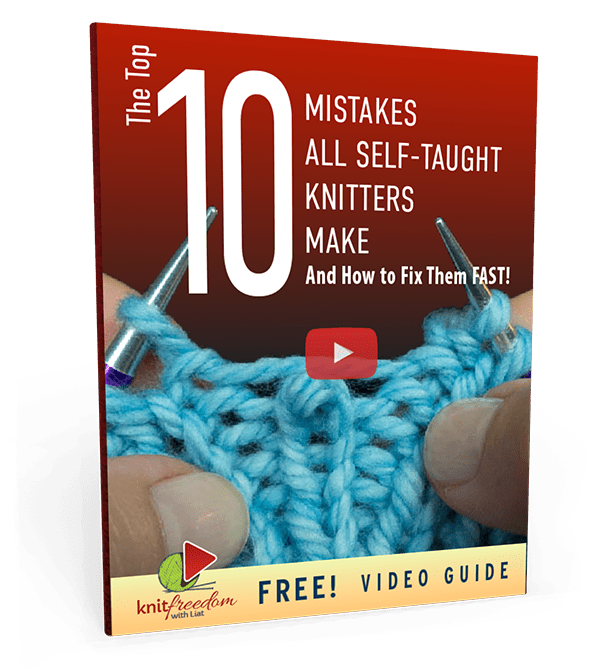Ch. 9 Pattern-Reading 201
Options In Pattern Instructions
Options in patterns can range from different sizes, to instructions for different yarn, or even different styles of the finished garment.
There is a standard format that designers use to make these options clear and easy to choose between – parentheses.
In the introductory section of the pattern, the designer will indicate the options using a format similar to these two examples:
Sizes: Small (Medium, Large)
or
Yarn: Aran (Bulky).
What this means is that in the pattern instructions, the designer will write the instructions for the first option, and then follow with the instructions for the other options in parenthesis, separated by commas.
For the first sample above, the instructions might start out:
CO 40(50,60) sts.
You can see that by following the first number, 40, you will be making the small size, whereas casting on 50 or 60 will make the medium or large sizes, respectively.
When a pattern gives you options like this, it’s a very good idea to scan through the pattern and either circle or highlight the number that pertains to your size.
You don’t want to be accidentally switching around halfway through.
Believe me, this happens to the best of us, so use an ounce of prevention and circle your numbers. ;)
On our ribbed scarf project, I’m giving you the option to knit it with one of two different thicknesses of yarn. The thicker yarn requires thicker needles and the scarf will go a little faster, and it will look more bulky.
Circle the options in the pattern below that pertain to your choice.
Repeats in Pattern Instructions
When the designer would like you to repeat a set of instructions more than once in the same row of knitting, he or she will use an asterisk and/or parentheses to show you which parts of the pattern to repeat.
For example, what we’ve been doing (starting with a knit stitch and then alternating purl and knit stitches all the way across the row) would be written as:
Row 1: *K1, p1, repeat from * to end of row
or, in even more abbreviated language:
Row 1: *K1, p1, rep from * to end.
Reading across the instructions like a sentence, you can see that after you knit one and then purl one, the next instructions tell you to go back to the beginning (where the * is) and start again, over and over until you get to the end of the row.
In the case of a simple stitch like 1×1 rib, it might seem a little clunky to use all these extra words and symbols, which is why you may often see a designer write
Row 1: Work in 1×1 rib across
which just means to work in 1×1 rib across the whole row.
Another way to show which parts of the pattern need to be repeated is with parentheses, indicating that whatever in the parentheses can be treated as one unit for the sake of repeating it a certain number of times.
In the case of 1×1 rib, that would look like this:
Row 1: (K1, p1), repeat to end of row
or, in more abbreviated language:
Row 1: (K1, p1), rep to end
or simply
Row 1: (K1, p1) across.
Every single one of the above examples means the same thing. I’ll be using a mix of these styles of abbreviations in this e-book to give you practice reading them.
Alright, you’re ready to get out the big guns and start your scarf.
Read through the directions as well as the tips that follow the pattern, circle the number of cast-on stitches that corresponds with your yarn choice, and take it away!
Note that you will run out of yarn and will have to switch to a new ball of yarn at some point during the project.
Knitting patterns will not tell you to do this – it’s assumed (review Switching To a New Ball of Yarn in the Learn-to-Knit course if you don’t remember how to do this).

